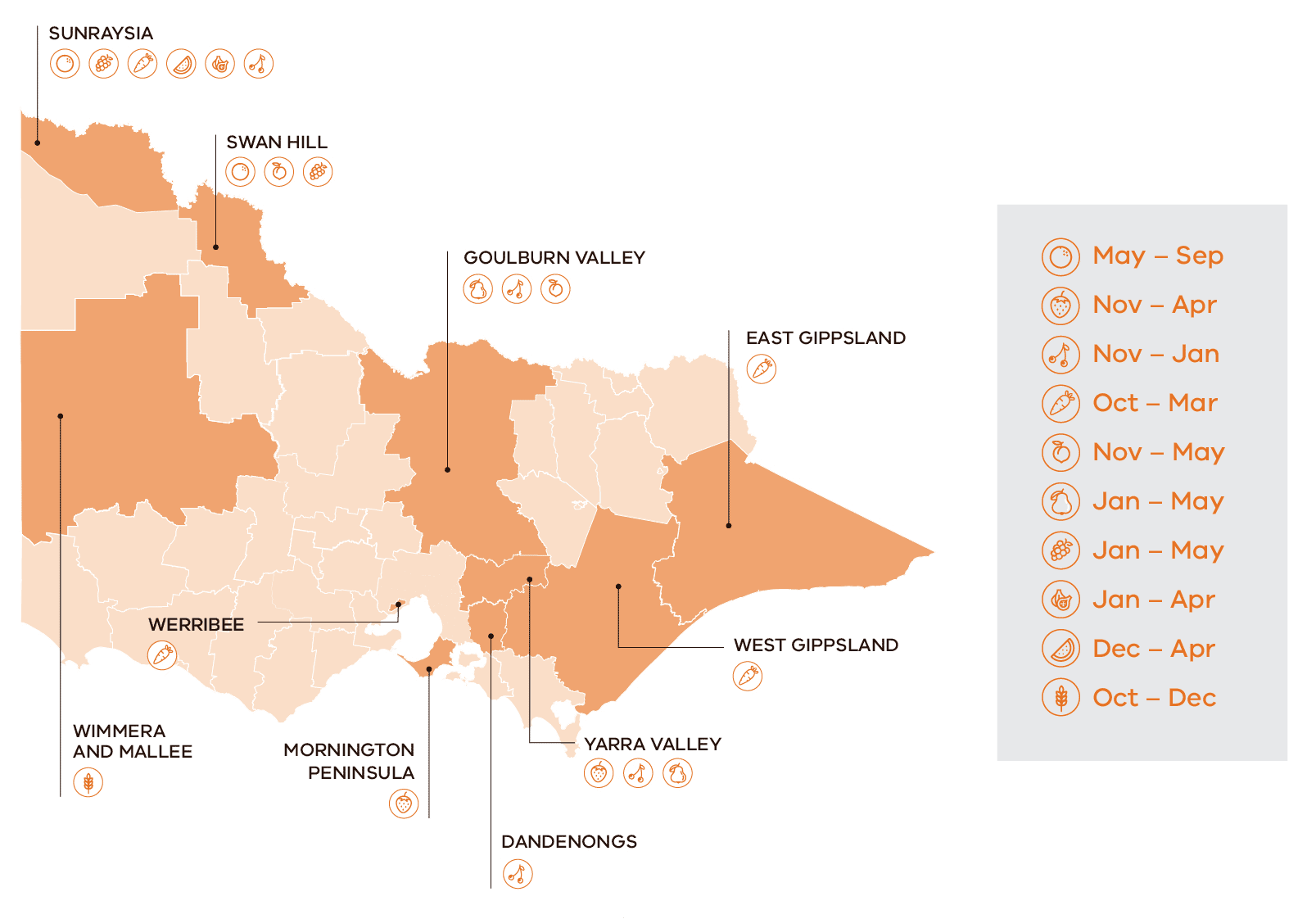How to get a harvest job
Harvest workers of all ages and skillsets are needed. Jobs include:
- fruit picking in the field
- preparing and packing the fruit in sheds to get it ready for distribution
- pruning and thinning fruit trees
- driving tractors, forklifts and other machinery.
Most jobs require skills that can be learned on the job. Some jobs require training, skills or licences – like driving, for example. Check what’s needed before you apply.
The work is rewarding but it can be physically demanding. Some jobs may require heavy lifting, bending, climbing ladders and operating machinery. The work is often outdoors.
Find the right job for you
Step 1: Do your research
Before applying for a job, read about the produce, harvest process, industry and where it’s located.
Search for information on horticulture industry websites and local government websites.
The Fair Work Ombudsman’s Working the harvest trail page has tips for job seekers and an employment checklist.
Ensure the job and employer are reputable before you apply.
Jobs are often listed by labour hire companies, which source workers for farmers. In Victoria, you can check if the company is a licensed labour hire provider on the Labour Hire Authority website.
Step 2: Enrol in some free training
Get job-ready by doing some training. Most of the training is quick and simple.
Being able to show on your job application that you’ve done some relevant training helps employers find the most suitable people for the work.
Information about free training opportunities is available on the Training for harvest work page.
Step 3: Download the Record My Hours app
The Record My Hours app can record your work hours. It can also help track the amount you pick, pack or prune (your piece) during a shift.
Find a harvest job now
You can also find a harvest job by:
- searching the Workforce Australia jobs board
- contacting your nearest Skills and Jobs Centre, which can help you prepare your resume, search for jobs and access training and other support
- looking in local newspapers in regional Victoria and joining farm work groups on social media.
Pay and your work rights
Most seasonal horticulture workers are hired under the Australian Government’s Horticulture Award. The award outlines minimum hourly pay rates, piece rates and other entitlements like leave and overtime. The award also covers workers hired through labour hire providers.
The Fair Work Commission has determined a new minimum hourly wage guarantee for pieceworkers which came into effect in April 2022. For further details visit the Fair Work Ombudsman website.
Find out where and when harvest is
Victoria's regions need workers at different times. Harvest workers often work on a number of farms during the season, following the harvest around the state.
Use the map and table below to plan where you could work this harvest season.

Industry | Region | Harvest season |
|---|---|---|
Citrus | Sunraysia, Swan Hill | May – September |
Berries | Yarra Valley, Mornington Peninsula | November – April |
Cherries | North East Victoria, Goulburn Valley, Yarra Valley, Dandenongs, Sunraysia | November – January |
Vegetables | Sunraysia, Werribee, East and West Gippsland | October – March |
Summer fruit | Swan Hill, Goulburn Valley | November – May |
Apples and pears | Goulburn Valley, Yarra Valley | January – May |
Table grapes | Sunraysia, Swan Hill | January – May |
Dried fruit | Sunraysia | January – April |
Melons | Sunraysia | December – April |
Grains | Grain growing regions – harvest commencing in north and moving south | October – December |
Shearing | Largest sheep population in a band from Warrnambool to Wodonga | Peak: September – December |